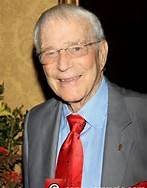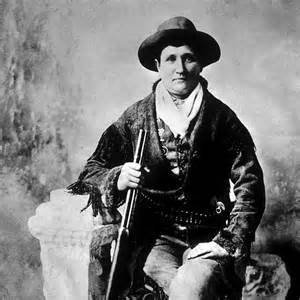
Throughout most of human history, infant nutrition has primarily depended on the availability of the child's mother or a wet nurse to breastfeed the infant. Beliefs and behaviors relating to infant feeding also vary widely across countries, cultures and times. Mothers and caregivers have also sought additional ways to feed children, sometimes referred to as "hand feeding". As early as 1500 BCE, Egyptian pottery shows images of women breastfeeding their babies and also using animal horns to feed them.
Containers with hard spouts date to early in recorded time, as evidence by archaeological finds. The first vessels known to be used for feeding infants had an opening at one end for filling the bottle, and a second at the other to be put into the baby's mouth. Examination of the organic residues on ancient ceramic baby bottles shows that they were used as early as 1200 BCE to feed babies with animal milk.
Around 250 BCE to 300 BCE the Egyptians developed the ability to blow glass and the Romans blew clear feeding bottles of glass, but these did not retain obtain long-term popularity. Leather and wood were also used.
By the 1700s infant-feeding vessels such as the feeding-cups, bubby-pots, and sucking-pots were also being made from materials that included pewter, tin, and silver.
In the 19th century, artificial feeding begin to replace wet nursing, and by 1900, wet nursing no longer existed as an organized profession. Changes to the feeding of infants were both socially and technologically driven. With industrialization, more mothers worked outside the home and could less easily breastfeed their children. Technological changes including the design of artificial feeding methods and the preparation of animal milks and other milk substitutes supported a transition to artificial feeding. but with mixed success. Understanding of both nutrition and sanitation lagged behind the introduction of artificial feeding methods, contributing to extremely high infant mortality rates in the Victorian era.
In the United States, the first glass nursing bottle was patented by C.M. Windship in 1841. It was intentionally shaped like the mother's breast. In 1845 the Alexandra Feeder was marketed in England. In Paris, the "Biberon" was introduced by M. Darbo: it was reported to be quite popular in a review from 1851. As the group American Collectors of Infant Feeders notes, by "the late 1800s a large variety of glass nursing bottles were produced in the United States", and the U.S. Patent Office had issued more than 200 patents for various designs of nursing bottles by the 1940s—designed to lie flat or stand up straight, with openings on their sides or ends, with detachable or permanently attached nipples, etc.
The design of baby bottles and particularly the ease of cleaning them had potentially serious consequences for the health of the children using them. Estimates of infant mortality suggest that 20-30% of infants died in the first year of life during the late Victorian era. During the 1890s, at a time when England's childhood mortality rates (ages 1-5) were declining, infant mortality rates actually rose. A bottle with a long Indian rubber tube ending in a teat remained popular until the 1920s because even very young babies could feed independently. The feeding tubes could be bought separately and were sometimes used with empty whiskey or medicine bottles. Almost impossible to keep clean, this type has been nicknamed the "murder bottle".
Allen and Hanbury introduced a new bottle design with a removable valve and teat on the two ends in 1894, and an improved model, the Allenbury, in 1900. This "banana" bottle was easier to clean. Sometimes referred to as the "hygienic bottle", it helped to improve survival rates. Similar bottles were introduced by other manufacturers and remained popular from the 1900s to the 1950s. Eventually increased understanding of the causes and transmission of disease and improvements in medicine and public health began to reduce infant mortality.
Heat-resistant Pyrex bottles were introduced to the American and British markets at different times. Pyrex bottles were first introduced in the United States by Corning Inc. in 1922.
They were offered in three shapes (narrow neck, wide mouth, and flat) and multiple sizes, for a total of ten varieties. By 1925, the product line had been limited to a small subset of the original shapes and sizes. In the 1950s a upright Pyrex bottle with a narrow neck was introduced. In the 1960s a wide-neck version was finally introduced to the UK market. The design of upright bottles with a wider mouth meant that they could be more easily cleaned, and sterilized in batches.
Soft nipples of various materials were introduced early in the history of feeding (e.g., leather, cork, sponge, dried cow's teat filled with cloth). Many were very difficult to clean and when unsanitary could pose a serious threat to infant health. Although Elijah Pratt of New York patented the first rubber nipple in 1845, it took until the 20th century before materials and technology improved sufficiently to allow manufacture of a soft nipple that was practical for use. The invention of rubber (1840s) provided a material that was soft. Early black Indian rubber "had a very strong pungent smell", and did not survive repeated exposures to hot water. However, by the early 1900s more pleasing rubber nipples could be manufactured in volume and could withstand the heat of sterilization.
During the 1940s nurse Adda M. Allen filed for multiple patents relating to the design of baby bottles, including the first disposable collapsible liner for a baby bottle. Her patent was one of many attempts to design a bottle to limit swallowing of air during feeding, and reduce gastric upset and spitting up. A plastic bottle with a disposable liner was eventually tested at George Washington University Hospital and marketed by Playtex.
Innovations such as the introduction of a working check valve in the nipple (to provide unidirectional flow of the liquid food) appeared as early as 1948 in a patent to J.W. Less. This technology was picked up by others including Owens-Illinois Glass, eventually making its way into Gerber and all modern pressure-balancing bottle designs. It is also used for adult drinking cups and various other products requiring fluid flow under vacuum.
The modern business of producing bottles in the developed world is substantial. For 2018, the global baby bottle market was valued at 2.6 billion USD. In 1999 it was reported that the UK "feeding and sterilizing equipment sector ... stands at … sales of feeding bottles account for 39% of that market.
Here's a side dish that's simply "smashing"! (No, really). Our Parmesan Smashed Potatoes are crispy on the outside, tender as can be on the inside, and full of flavor throughout. Plus, did we mention how much fun it is to smash these?!
- 2 1/2 pounds small potatoes (about 12)
- 1/2 stick (1/4 cup) butter, melted
- 3 cloves garlic, minced
- 1 tablespoon chopped fresh parsley
- 1/2 teaspoon salt
- 1/4 teaspoon black pepper
- 2 tablespoons Parmesan cheese
- In a large saucepan over high heat, place potatoes in enough water to cover; bring to a boil. Once boiling, reduce heat to medium and simmer about 20 minutes, or until potatoes are just tender. Drain and let cool slightly.
- Preheat oven to 450º. Coat 2 baking sheets with cooking spray. Place potatoes on baking sheet. Using a large spoon or the heel of your hand, gently press down on each potato to smash it, so it ends up about 1/2-inch thick. Make sure to keep each potato in one piece.
- In a small bowl, combine butter, garlic, parsley, salt, and pepper; mix well. Brush mixture over potatoes, then sprinkle with Parmesan cheese.
- Bake 15 to 20 minutes, or until potatoes are crispy and golden.
1930 – The dwarf planet Pluto is officially named.
1931 – The Empire State Building is dedicated in New York City
1945 – World War II: Joseph Goebbels and his wife Magda commit suicide in the Reich Garden outside the Führerbunker. Their children are murdered by Magda by having cyanide pills inserted into their mouths.

HOW TO OBSERVE
- Dance! Either dance around a May Pole or just dance with someone near to you.
- Plant flowers. Make a point of planting wildflowers and you will attract pollinators such as bees and butterflies.
Had another, and didn’t love her;
Peter learned to read and spell,
And then he loved her very well.
Had a wife and couldn’t keep her;
He put her in a pumpkin shell












No comments:
Post a Comment